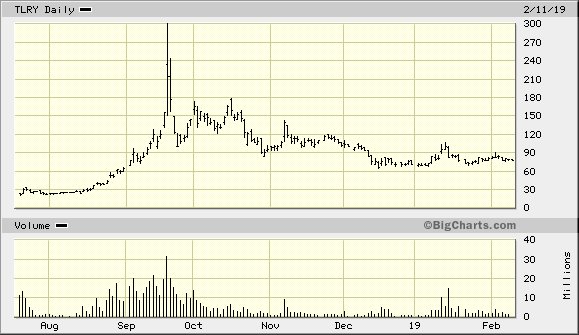By Jacob Wolinsky. Originally published at ValueWalk.
Whitney Tilson‘s email to investors inviting them to the 2019 Bull vs Bear Summit.
Glenn and I are two of the five panelists at the 2019 Bull vs Bear Summit, a free webinar that will air in two days on Wednesday at 8pm ET. I learned a lot from the fascinating debate, so I urge you to watch it – you can sign up here. (Even if you can’t watch it live, sign up and you’ll receive a link to watch the replay afterward.)
Q4 hedge fund letters, conference, scoops etc
The webinar is hosted by PhD mathematician Richard Smith, who founded a business called TradeSmith and, years ago, partnered up with Stansberry Research (as I’ve recently done to form Empire Financial Research). He has developed a product called TradeStops, which helps investors make more analytical, less emotional decisions about when to sell positions.
I used to scoff at any kind of formulas – just calculate intrinsic value and then buy 50-cent dollars and sell when they become $1 dollars, right? – but as I look back at my investing career, I think I would have done a lot better if I’d used a tool like TradeStops, or developed my own stop-loss policies.
Allow me to share a personal story to show you what I mean…
Last September 18 – the day before the peak of the pot stock bubble – my cousin, who by his own admission knows nothing about investing, told me he’d bought Tilray (TLRY) stock only a month earlier below $50. With the stock trading at $155, he asked me what he should do with it.
“SELL IMMEDIATELY!” I said. “It’s an obvious bubble and the stock is sure to collapse!”
While I was right (it’s been cut in half since then), it turns out that my cousin was smarter than I was.
He replied: “You’re probably right that it’s a bubble – but you would have told me to sell at $75, $100 and $125 (true!) – and this stock sure has a lot of momentum (also true), so rather than selling, I’m going to keep riding it, but with a 20% stop loss.”
The very next day, the stock opened up 50% at $233, then fell to $186 in the morning, where he got stopped out. It rose to $300 in the afternoon – at which point, he was pissed at me – before it crashed into the close, bottoming at $151 before closing at $214. It closed the next day at $176 and has never broken $180 since then, as you can see in this chart of the stock’s trading since its IPO last July:
So, by ignoring me and instead using a stop loss, my cousin made an extra 20% on his position (from $155 to $186).
There’s a VERY important lesson here. What matters in investing isn’t your batting average (i.e. what percent of your stocks make money), but rather your slugging percentage (i.e. how much you make when you’re right versus how much you lose when you’re wrong).
It goes without saying, therefore, that the key to maximizing your long-term investment returns is to: 1) really make A TON of money on the handful of rocketships you’re smart/lucky enough to invest in; and 2) cut your losses on your mistakes before they take you out on a stretcher.
Unfortunately, I learned these lessons far too late in my investing career. I owned some of the greatest stocks of the past 20 years like Amazon, Apple, Ross Stores (seriously – it’s been a 50-bagger in the last two decades) and Netflix – but in every case, I sold after a small gain. Had I held even one of these stocks, the entire story of Kase Capital could have been far different!
To be clear, I’m not saying you should never sell a stock that’s working – just ask the guys who rose Valeant up 20x in six years… right before it fell 97%! But you MUST let your winners run, trimming as necessary so that the position size doesn’t get too risky, and keeping a close eye on whether the story is changing (like with Valeant).
In addition to harvesting my winners too quickly, I also tended to dig in my heels when a stock was running against me and refuse to admit I’d made a mistake and exit. This was especially painful on the short side, where I’ve lost count of how many stocks doubled or more against me (the worst being Tesla, which I rode from $35 to $205).
You MUST be willing to exit losing positions – even if only for 30 days to capture the tax loss. You can always get back in later. Of course, you should let the market be your servant, not your guide. But emotions can cause even the smartest investors to go down with a sinking ship (on the long side) or get demolished by a rocketship (on the short side), so having stop losses and using a tool like TradeStops can make sense.
There are no easy answers, which is why a lot of experience is critical. To learn more, I suggest hearing what Richard Smith has to say at the Bull vs Bear Summit. (Again, you can sign up here.)
The post Whitney Tilson: Join Me For The 2019 Bull vs Bear Summit appeared first on ValueWalk.
Sign up for ValueWalk’s free newsletter here.





